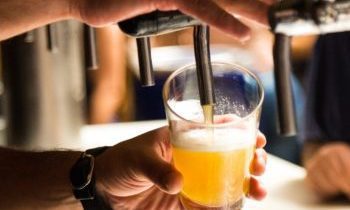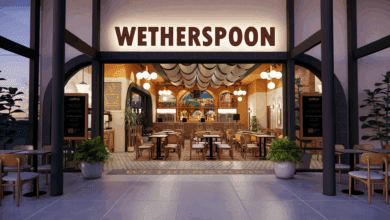
Register to get 1 free article
Reveal the article below by registering for our email newsletter.
Want unlimited access? View Plans
Already have an account? Sign in
The restaurant industry has demonstrated unprecedented resilience in recent years. Coping with wave after wave of challenges, from the devastating impact of the Covid-19 pandemic to chronic labour shortages and skyrocketing energy costs, it has bounced back again and again.
At a time of extreme economic and financial volatility, restaurant owners are looking to leverage all tools at their disposal to manage their business, keep up with changing customer needs, manage rising costs, and maximise available inventory.
Having the right technology in place can enhance all aspects of the business, driving operational efficiencies and informing decision making. The key is investing in solid tools that can perform multiple actions to help restaurant owners manage all the moving parts of their business. A point-of-sale (POS) and business management system is a smart place to start.
Meeting customers’ current payment expectations
The Covid-19 pandemic turbocharged the shift towards cashless and contactless payments, whether via card, phone or even watch. For instance, according to a Business Comparison report, cashless payments made up 67% of total payments in the UK over a recent 12 month period. For many customers, these types of payments are now a prerequisite, making a POS system a business necessity.
The question for restaurant owners is not whether to accept cashless and contactless payments – it is whether to accept cash at all. Regardless of the decision, when it comes to payments, the more convenient and seamless the experience is for customers, the better it is for building loyalty and repeat custom. As an industry, we should commit to making it easy for customers to pay the way they wish.
Cashless and contactless payments also bring additional benefits beyond customer satisfaction. Since these types of payments are logged at the point of sale, they can provide a more accurate and transparent record for both business owners and their customers. This type of data can be helpful in dealing with chargebacks and fraud claims, and in analysing transaction trends.
Day-to-day efficiencies
Cashless payments can also speed up service and help eliminate human error when taking payments. However, this is only the start. A POS and business management system designed for restaurants can ultimately manage all front of house processes to increase everyday efficiencies, thereby improving margins.
Most restaurant POS systems are now highly functional when it comes to processing orders, taking payments and storing restaurant data. The addition of other restaurant management capabilities brings real value to restaurant owners. As an example, an integrated feature or app can be used by staff to clock-in and clock-out, and by restaurant managers to coordinate shift rotas and pull data to make better scheduling decisions.
Technology can also be used to more effectively manage online orders. Even before Covid-19, online ordering was already popular among diners. Stay-at-home orders led even more customers nationwide to adopt online ordering and embrace its many benefits, like the convenience and freedom to dine how they want and order at their own pace.
Not only does online ordering provide restaurant owners with access to a wider customer base, it can prove a cost-effective means to scale. By moving restaurants’ operations online, merchants are able to maintain a leaner workforce while still producing the same amount of output. As long as the kitchen can keep up, restaurant owners can also seat as many “virtual” guests as they want.
Informing the restaurants’ decision-making
Data is crucial for restaurant owners if they are to make informed business decisions, especially now as they ride out a difficult economic period. That’s why digitising operations is so important to drive better data, and subsequently better decision-making. An integrated POS and business management system can provide actionable business insights from in-person and online orders, such as real-time data on sales and revenue to help the restaurant grow.
As new orders come in, those real-time sales are instantly captured and reported – allowing the restaurant owner to gain deeper insights into customers and their behaviour. Not only can they learn more about the best-selling menu items and busiest days and times, they can also offer rewards, discounts, and special promotions to customers who opt to receive such communication, further growing the customer base.
Digital business management systems also have inventory management capabilities, which can help manage food waste while assuring the restaurant has enough inventory on-hand to fulfil orders. Both of these are essential when it comes to staying in control of restaurant profit margins.
Navigating the months ahead will be tough for restaurants, but investing in the best possible multi-functional tools can pay off. The more that can be digitised, the more data-rich insights restaurant owners will have to stay one step ahead and alleviate some of the operational and external pressures they face. The technology restaurant owners choose to help the business thrive today will be crucial to support the establishment’s growth in the future as the outlook brightens.







